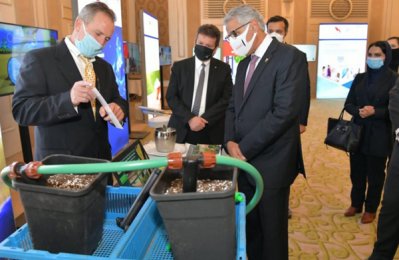Shell process to make blue hydrogen production affordable
Shell Catalysts and Technologies is launching the Shell Blue Hydrogen Process, which integrates proven technologies to increase significantly the affordability of greenfield projects for “blue” hydrogen production from natural gas along with CCUS.
More Stories
Shell Catalysts and Technologies is launching the Shell Blue Hydrogen Process, which integrates proven technologies to increase significantly the affordability of greenfield projects for “blue” hydrogen production from natural gas along with carbon capture, utilisation and storage (CCUS).
Affordable blue hydrogen enables the decarbonisation of hard-to-abate heavy industries while creating value for refiners and resource holders. Shell’s new process can reduce the levellised cost of hydrogen by 22 per cent compared with the best the market has to offer today.
Without low-carbon hydrogen, the net-zero goals announced by governments and companies will be difficult to achieve. Currently, hydrogen production is nearly all “grey” (from hydrocarbons without CCUS). If hydrogen is to contribute to carbon neutrality, it must be produced on a much larger scale and with far lower emission levels.
Blue hydrogen production can be relatively easily scaled up to meet demand. With carbon dioxide (CO2) costing $25–35/t, blue hydrogen becomes competitive against grey, even with its higher capital costs. And green hydrogen, produced from the renewable-energy powered electrolysis of water, may still be more than double the price of blue hydrogen by 2030 and not achieve cost parity until about 2045.
Advantages
This analysis is based on conventional steam methane reforming (SMR) and autothermal reforming (ATR) technologies. The availability of the Shell Blue Hydrogen Process, which integrates proprietary Shell gas partial oxidation (SGP) technology with ADIP ULTRA solvent technology, further improves blue hydrogen economics.
A key advantage of SGP technology over ATR is that the partial oxidation reaction does not require steam. Instead, high-pressure steam is generated, which satisfies the steam demands of the process and some other power consumers. There is also no need for feed gas pretreatment, which simples the process line-up. And SGP gives refiners greater feed flexibility, as it is more robust against feed contaminants and can thus accommodate a large range of natural gas qualities.
Compared with ATR, SGP technology gives a 22 per cent lower levellised cost of hydrogen from:
• 17 per cent lower capital expenditure (higher operating pressure giving smaller hydrogen compressor and CO2 capture and compressor units).
• 34 per cent lower operating expenditure (excluding the natural gas feedstock price) from reduced compression duties and more steam generation.
Modelling shows that, compared with an ATR unit, a Shell Blue Hydrogen Process line-up producing 500 t/d of pure hydrogen would have:
• $30 million per year lower operating expenditure.
• More than 99 per cent CO2 capture.
• 10–25 per cent lower levellised cost of hydrogen.
When compared with SMR, SGP technology leads to even greater hydrogen production cost savings from both the capital and operating expenditure perspectives.
Process maturity and experience
Shell began research into SGP technology in the 1950s. Today, the technology has more than 30 active residue and gas gasification licensees, and there are more than 100 SGP gasifiers worldwide. For example, at the Pearl gas-to-liquids plant, Qatar, 18 SGP trains, each with an equivalent pure hydrogen production capacity of 500 t/d, have been operating since 2011. Since 1997, Pernis refinery, the Netherlands, has been operating at a 1-Mt/y CO2 capture capacity using SGP technology.
Shell also has CCUS experience through its involvement in multiple projects in different phases of development, and can offer key technologies and insights into CO2 capture, compression, transport, utilisation and storage. —Tradearabia News Service
Projects
















